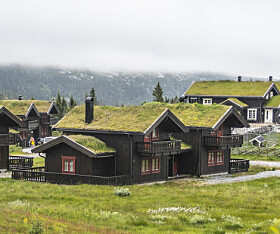
Cabins were first and foremost for the elite. Until public holidays and the private car came and changed everything
Vacuum-packed faeces and troublesome chemicals. For many decades, people have tried to improve cabin life.
There are around half a million cabins in Norway.
Roughly half the population, of 5,4 million people, say they have access to one of them.
The Maihaugen Museum in Lillehammer has assembled some period cabins from different social strata and decades in its open-air museum.
One is Kinck’s cabin - pictured at the top of this article - a two-story log building that was erected on Mesnali by writer Hans E. Kinck in 1911.
The cabin is large, at least by the standards of the time. And it has its own room for a maid. Kinck and his family were part of the bourgeoisie. The rich were the first to acquire holiday homes.
“The cabin is primarily a post-war phenomenon. Before that time, it was an elite phenomenon, or it was work-related housing, which today is thought of as a cabin,” Finn Arne Jørgensen says to sciencenorway.no. Jørgensen is a professor of environmental history at the University of Stavanger.
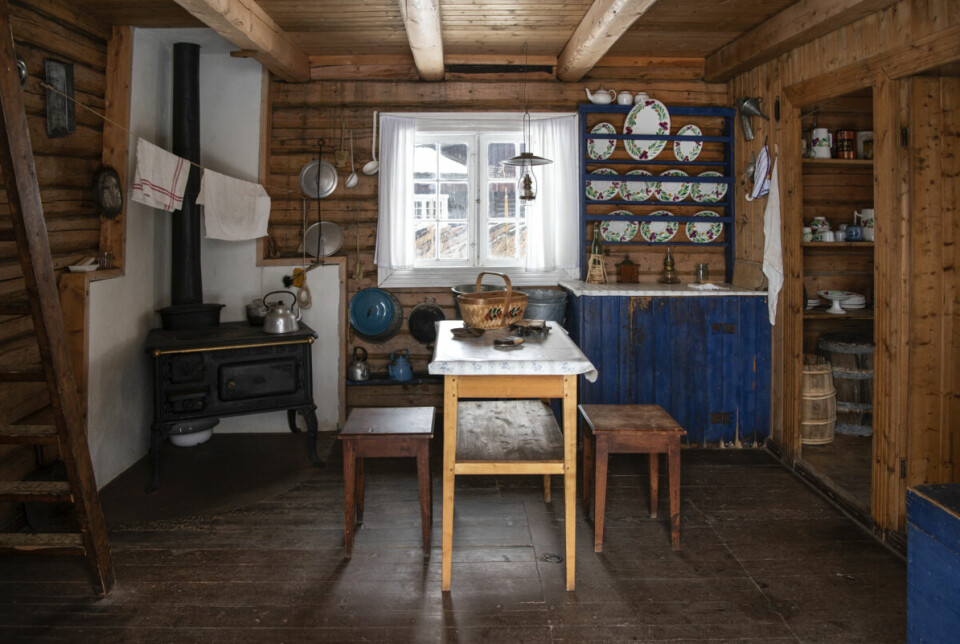
Private car and explosion in cabin construction
“What is interesting in Norway is that the cabin has no class affiliation,” Jørgensen says.
People from all walks of life have access to cabins just for the sake of recreation.
The oldest post-war cabin at Maihaugen is a trade union cabin that was built in 1959. It’s one of many trade union cabins from the post-war era. After the Public Holidays Act was passed in the 1937, people had the time and need for a place to be during the summer holidays.

Cabin construction accelerated beginning in 1960. It was then that automobile rationing ended, and many families bought their own car. It became easy to travel to more far-flung areas on weekends and holidays.
“Car ownership and cabin ownership follow the same curve. They both go straight up,” Jørgensen says to sciencenorway.no. “People started building an insane amount of cabins, many more than are being built today.”
Suddenly there was a shortage of cabin lots
Back in the day, there were few or no regulations governing where you could build a cabin. People built where they could get access. That’s why many older cabins are remote. Eventually, the authorities realized that people built their cabins close together in attractive areas, clustered like islands in an archipelago.
A new planning and building act and a beach protection act were passed to ensure that people would have access to the sea and the mountains without having to own a plot of land. It then became a matter of getting a cabin built as quickly as possible before the new regulations came into force.
“People built even more, before it was too late. Many of the cabins that were built at this time were built of poor quality materials. The work was done quickly and a little crazily,” Jørgensen said.
All that building meant that by the end of the 1970s, cabin lots were scarce.
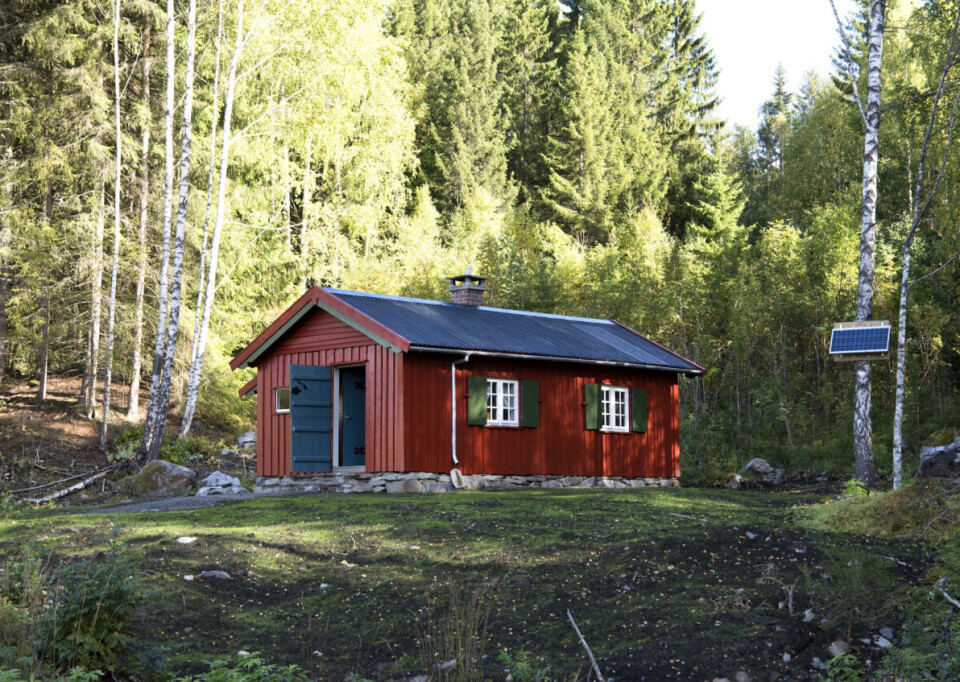
Vacuum-packed and frozen poop
The cabins built in the 1960s were often very simple. Many of them have been regularly refurbished and improved, says Jørgensen.
“From the 1970s, there has been an enormous amount of activity surrounding the toilet. An outdoor toilet isn’t workable when people have become used to having a toilet indoors,” Jørgensen said.
People found creative ways to destroy their poop. With varying degrees of success.
Jørgensen lists some examples:
Many people used chemicals. You had a bucket of formalin as a toilet. Formalin is a liquid that is used to prevent organic material from rotting, among other uses.
The problem was once the poop was pickled in the formalin, people had nowhere to dispose of it, and formalin is not a substance that you want to dump in the environment. Pollution problems were extensive in areas with a large number of cabins.
People started looking for alternatives. Enter the incinerator toilet.
“They are fine when they work, but when you get a half-burnt mass, it’s quite unappetizing,” Jørgensen says.
Vacuum packaging of excrement was also tested so that it could be taken home and thrown in the rubbish.
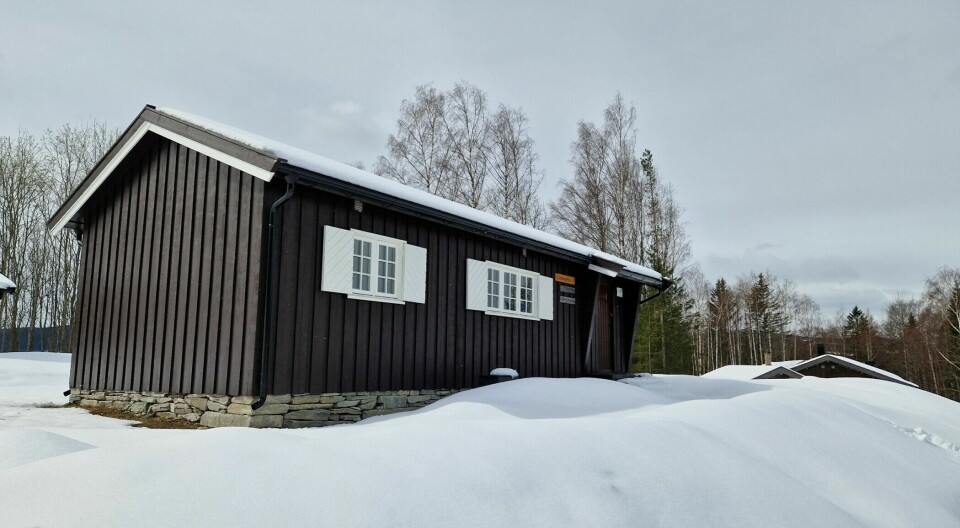
The compost bin - environmentally friendly with a catch
Freezer toilets and single-use cardboard boxes with a plastic coating inside were tried. And of course a compost toilet, which is still found in many cabins, sometimes with chambers underneath that can be rotated every year so that the composting poop can decompose for several years before the chamber has to be emptied.
The composting toilet is the most environmentally friendly solution, according to the environmental historian:
“But to function optimally, it needs a heating supply and a fan to get the maximum effect of composting. You have to have other technologies to support it,” Jørgensen said.
A WC, which many people want in their cabins today, also requires a drain. Thus, the cabin cannot be located just anywhere.
“Technology comes in packages. You can’t just choose one thing — they are closely related,” he said.
Modernization wasn’t limited to the bathroom, however.
Needed a practical kitchen
The golden age of housewives ended in the 1970. More women had entered the workforce. At the same time, traditional gender roles still applied.
Men often took care of practical things, while women spent most of their time keeping the house tidy and putting food on the table. Home kitchens gradually became more modern and practical.
“Women were not interested in doing the same work at the cabin in a more cumbersome way. It became very common for women to want a good, functional kitchen when they have to cook,” Jørgensen said.
“Many women in the 1970s and early 80s actively discussed this in order to upgrade their cabin kitchens,” he said.
It was easier to have a practical kitchen when technology-crazed Norwegians attached a solar panel to the birch tree outside the cabin in the 1980s and finally brought electricity to the cabin, albeit in limited quantities.
A good old modern log cabin
The 1994 Olympics were important for Norway and continues to have an influence. This is very clear when you drive through Lillehammer and the Olympic municipalities in Gudbrandsdalen. But traces of the Olympics can be found in several places in the country, you just have to notice them.
The Olympics brought a new style in many ways, Jørgensen said.
Cabin villages were built for the athletes and journalists. The style was inspired by the architecture in Gudbrandsdalen, and Norwegian peasant culture in general. The cabins were built with Norwegian materials, timber and turf roofs. These were used in older cabins too, but the trend got stronger and has persisted.
“These are often what we think of as very cabin-like today,” says Jørgensen.
The newer cabins tend to imitate the old styles.
“The older the cabin looks, the newer it is,” Jørgensen said.
During the cottage boom in the 1960s, very few had turf roofs. They were impractical and had a tendency to leak, Einar Odden wrote in the book ‘Hyttegrenda på Maihaugen’ (The Cabin Hamlet at Mailhaugen), published in 2021.
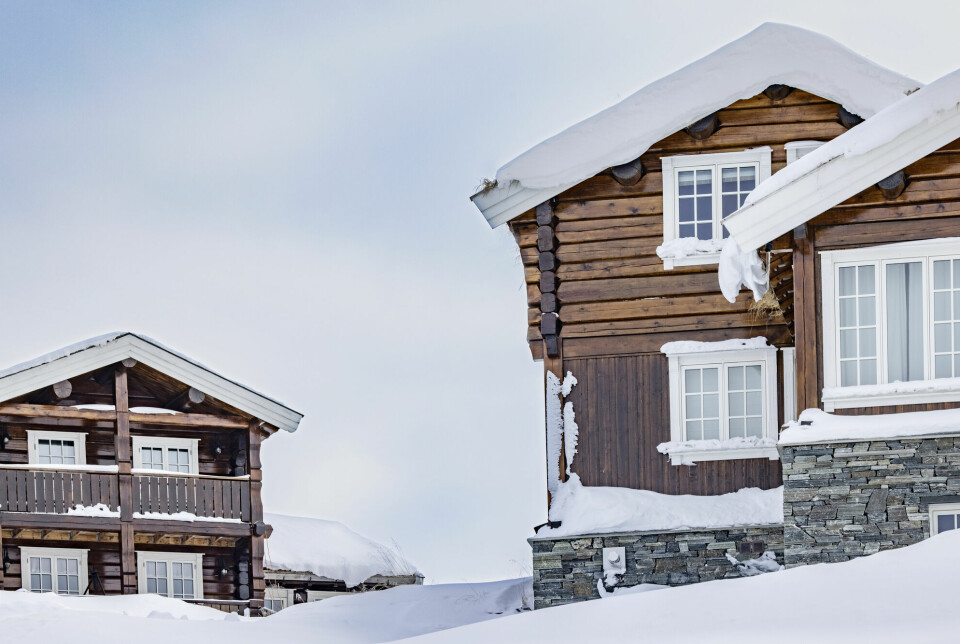
Is it a large cabin or is it a house?
Twenty years ago, around 2002 and 2003, something happened to Norwegian consumption. People had more disposable income. Some of that went to logs and planks, and the cabins got bigger.
“Then you really get high-standard cabins,” says Jørgensen.
Running water, electricity and bedrooms for everyone become a matter of course for many.
Large cabins that meet all requirements for comfort and technology were built in villages all over Norway. Building many cabins in one place was the easiest and cheapest way to give people what they wanted.
Once again, more cabins were being built, about 6-7,000 a year. Still, that’s far fewer than in the 1960s, when 10-15,000 cabins were built each year.
“There was a big discussion in the 1960s: A number of landscape architects and planners sat down and thought about what we should do with all these cabins,” Jørgensen said.
Enormous encroachment on nature
By grouping the cabins in villages, people believed the cabins would take up less space overall, plus it’s cheaper to bring electricity, water and sewage to many cabins clustered in one place.
In Jørgensen's opinion, the environmental focus did not quite go according to plan.
“What happens over time is that there are too many cabin areas and the total encroachments on nature are enormous. You have to have full-sized standard roads, parking and infrastructure,” he said.
Based on newspaper articles and letters from readers, the cabin appears to be exempt from environmental concerns, Jørgensen said.
“I don't know if people have fully realized that the cabin is definitely part of the problem,” he said.

The dream of something simple
There is also not very much reuse, Jørgensen said. In the years after World War II, people built and furnished with materials and furniture that they had at hand. Now, Norwegian cabins often have to be beautiful and with a complete, lavish style.
But the idea that the cabin should be simple does not seem to have gone wholly out of style, the social anthropologists Marianne E. Lien and Simone Abram wrote in their 2016 book ‘Hytta — Fire vegger rundt en drøm’ (The Cabin - Four walls around a dream) from 2016:
‘Despite the fact that only one in four cabins has no electricity, the idea that the cabin should be simple, primitive and characterized by practical pursuits, such as carrying water and chopping wood, is very much alive.’
‘On the one hand we have the dream of something simpler, on the other hand the demand for comfort,’ they added.
The demand for comfort is probably partly due to changes in the way Norwegians use their cabins now compared to previously, says Jørgensen.
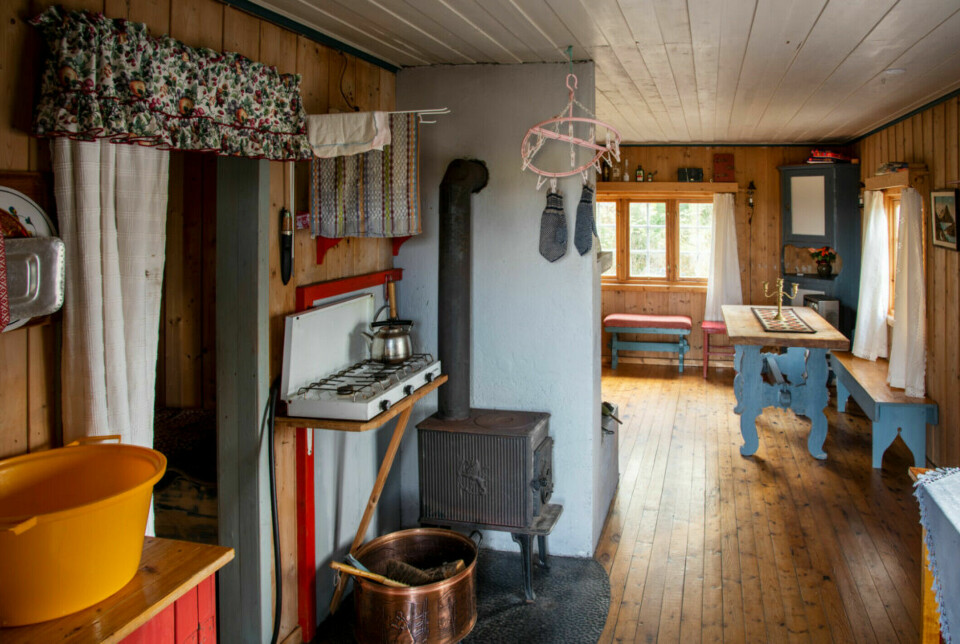
No time to adjust to cabin life
While Norwegians used to stay at their cabin for weeks at a time, today a cabin visit is more often than not a weekend excursion.
“Today we don’t have time for that transition. There’s a reason why we have communication and comfort in the cabin, then we don’t have to make the transition. It works in the same way as in the city,” he said
But it doesn't happen without a fight. Lien and Abram put it this way:
‘One of the most controversial changes to Norwegian cabins has to do with technology. There are arguments inside the cabins, and there are arguments between them. There are arguments between generations and between siblings. There are arguments in the local newspapers and in the technical agencies.’
‘What kind of comfort level should we strive for? Should cabins be close together, or should they be surrounded by mountain birch, rock or forest, with the nearest neighbour out of sight? How big should cabins be allowed to be, and when does a cabin stop being a cabin?’
“There will be a backlash with smaller and simpler cabins. We can already see that,” Jørgensen said.
He says that older, remote cabins are attractive:
“But there are fewer and fewer of them, and those that exist are falling into disrepair,” he said.
Translated by Nancy Bazilchuk
———
Read the Norwegian version of this article at forskning.no











